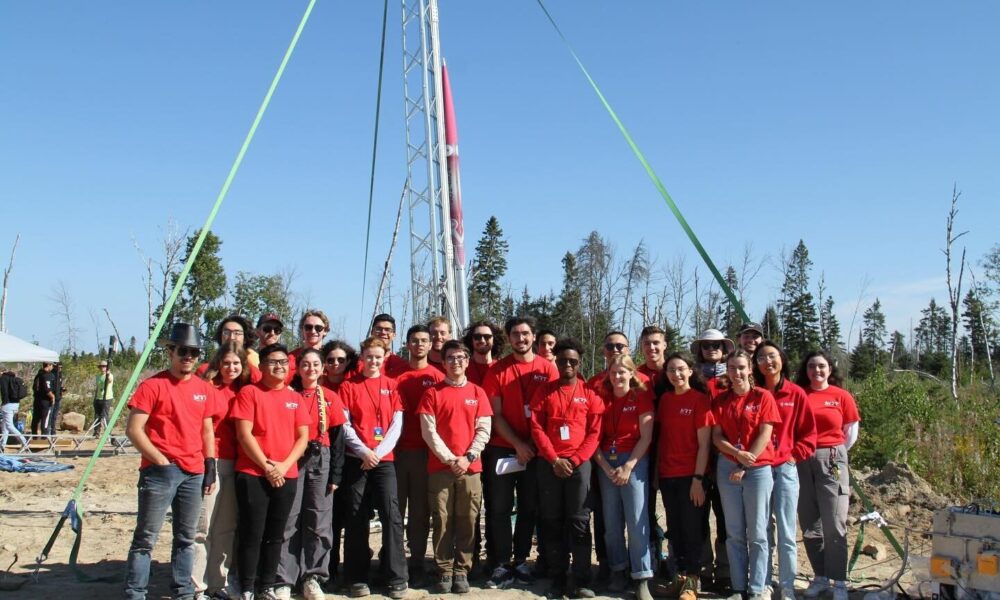On Aug. 29, 2023, the McGill Rocket Team, having driven the ten hours from Montreal to Timmins, Ontario, successfully launched their lovingly-engineered rocket Porthos. The vehicle flew to a height of 10,000 feet, and most impressively, the flight used a fully student-researched and developed hybrid engine.
Project Porthos earned them second place in the Advanced Category in the Launch Canada 2023 Challenge, not only showcasing the team’s exceptional expertise in rocketry but also confirming their reputation as a formidable force in innovative aerospace endeavours.
In an interview with The Tribune, Kay Romann, U2 Mechanical Engineering and Technical Director of the team, discussed the extensive commitment the team has put into Project Porthos over the years.
“There’s been years of development and […] testing. It takes a lot of time to validate an engine; you have to do it multiple times to identify issues and solve these problems,” Romann explained. “There’s the whole mathematics and physics of writing models to predict the performance of your engine [….] And so all of these aspects have been worked on by multiple generations of students that have now gone on to do research [and] commissioned research.”
Indeed, designing a hybrid motor—one that contains both solid fuel and liquid oxidizer—is no small feat.
“Engines that we’ve flown in the past, that most people buy, are solid motors, so both the oxidizer and the fuel are solid,” Amanda Kronish, U4 Mechanical Engineering and Co-Captain of the McGill Rocket Team, explained to The Tribune. “Hybrid engines are a lot more complex because you need to have plumbing to fill your rocket with that liquid oxidizer and transfer the liquid oxidizer to the combustion chamber. And that’s why […] it is so much more complex and it takes so much more work.”
This level of complexity does not come without its own set of substantial challenges.
“Our first hybrid rocket Athos […], actually never got to fly. That was the first rocket we built after the pandemic,” Alexandre Fahmy, U4 Mechanical Engineering and Co-captain of the team, said. “A lot of our members graduated, so we lost a lot of experience and knowledge. It was a huge challenge to build that rocket Athos; every little thing was difficult. […] But all of that experience allowed us to do much, much better this year.”
As they looked ahead to the new academic year, the McGill Rocket Team shared their two major objectives with The Tribune. One of the team’s goals is to significantly step up the power of their rockets.
“For this coming design cycle, we’re designing a rocket that goes to 60,000 feet, which is the maximum height that a rocket can fly at the competition that we attend,” Kronish said. “We want to push our engineering skills to their limits.”
The rockets that the team usually launches fly to 10,000 feet, which is a difficult task in itself, but achievable with a subsonic flight—one where the rocket never moves faster than the speed of sound. In order to achieve 60,000 feet, the rocket would have to go supersonic.
“It presents a whole new host of engineering challenges like making an airframe that survives that kind of speed, electronics, recovery, all kinds of things,” Kronish said.
The team’s other aim involves the work of the Payload subteam.
“We also are trying to start an orbital CubeSat program,” Kronish said. “In our rocket, we always have a payload, which is a scientific experiment, because we always want our rockets to have some kind of purpose, and an orbital CubeSat would basically be an extension of that program. So we want to send scientific experiments to space.”








